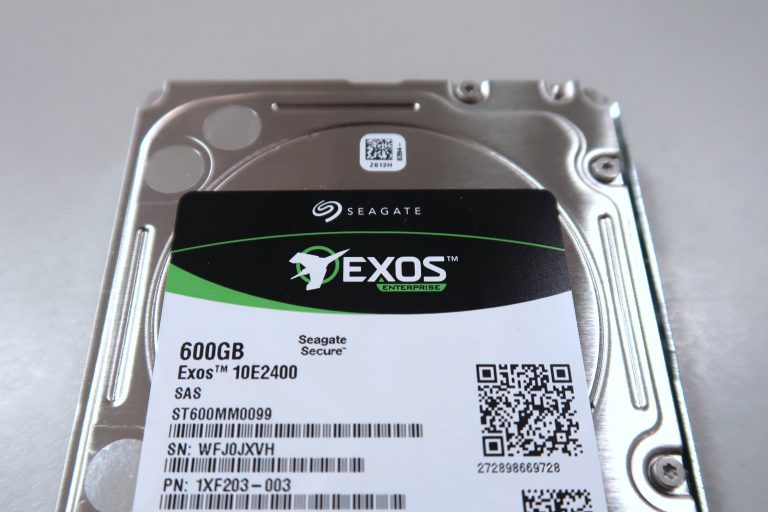Accounts receivable liquidity: we sort it out on the shelves

When dealing with accounts receivable, companies strive to achieve the optimal level of its liquidity. In this article, we will show you how to assess the correspondence of the degree of liquidity to other financial indicators of the business and how to increase it while maintaining the amount of accounts receivable.
Accounts receivable (hereinafter referred to as DZ) are debts of legal entities and individuals to the enterprise. The sooner you can achieve their repayment, the more liquid it is.
Usually, buyers and suppliers owe, less often – employees who received money from the company’s budget, or government institutions (for example, tax authorities), to which the company for some reason overpaid and now has the right to return the excess.
Counterparties can owe both money and goods or services. So, if the organization has transferred the advance payment to the supplier for the next batch, there will be a DZ in the balance until the goods arrive and are not taken to the warehouse.
In accounting, DZ is an asset, a part of the profit that can be disposed of only when it turns into money in the company’s account. Therefore, the solvency and financial stability of the company depends on the liquidity and quality of accounts receivable. At the same time, excessively high liquidity may indicate that, preferring to receive payment as soon as possible, the company is missing out on a segment of large business and because of this, it loses in profit.
The amount of debt must also be optimal. Zero or little debt indicates that the money is simply on the balance sheet. The large amount of debts of debtors with a lack of funds in the accounts creates difficulties in the functioning of the enterprise: there is nothing to pay employees and suppliers with.
How debt is formed
There are many variants of occurrence, we give the most common ones.
On the part of counterparties:
when a company pays an advance to a supplier or contractor;
when the buyer (in his role may be a branch or subsidiary) first receives a product or service, and pays later;
when the counterparty damages the company and does not compensate for it immediately (for example, if the logistics company damages the goods during transportation).
On the part of government agencies:
overpayment of tax;
when deducting “input” VAT (when purchasing goods for the purpose of carrying out transactions subject to VAT, the taxpayer has the right to a deduction (Articles 171 and 172 of the Tax Code of the Russian Federation));
for social payments that the FSS reimburses (for example, when the amount of benefits paid to an employee exceeds insurance premiums or when the costs of preventive measures are covered (up to 20% of the amount of contributions for the previous year can be spent on them)).
On the part of employees and members of the enterprise:
when the financially responsible person is given funds for work needs;
when an employer grants a loan to an employee;
when a member of the company delays payment to the authorized capital.
How to calculate liquidity
The liquidity of DZ can be assessed using the ratio of its turnover or using the period of its turnover.
1. The coefficient is considered as the ratio of revenue to accounts receivable for a period of time:
Cob.dz = DR / DZsr,
Where:
Kob.dz – turnover ratio D;
DR – the company’s income from the sale of products or services over a period of time (usually for a year, quarter or month);
ДЗср – average accounts receivable for the same period, i.e. the amount of DZ at the beginning and end of the period / 2.
That is, the balance calculation will look like this:
Cob.dz = 2110 / (1230 at the beginning of the period 1230 at the end of the period) x 0.5
2. The turnover period is equal to DZ at the end of the period, multiplied by the number of days of the settlement period and divided by the income:
Pob.dz = DZkp x P / DR,
Where:
ДЗкп – debt at the end of the period;
P is the period expressed in the number of days;
DR is the company’s income from the sale of products or services for the same period.
That is, the balance calculation will look like this:
Wb.dz = 1230 at the end of the period x P / 2110
If a company sells a lot on prepayment and / or payment at the time of shipment of goods, then the indicators should be calculated on the basis of revenue received only from sales with deferred payment.
But even with such a refinement, the estimate based only on the accounting basis may not reflect the real situation: it does not reflect either a decrease in the solvency of suppliers, or the expiration of the statute of limitations for debt collection. As a result, the DZ includes not only those debts that are likely to be repaid, but also those that are likely to have to be written off. Therefore, the quality of receivables is usually assessed manually, then, on the basis of this assessment, overdue, doubtful and bad debts are subtracted from the total amount and only after that the turnover ratio and / or the turnover period are calculated.
Debt quality assessment
The main parameters on the basis of which one can structure the RS in order to assess its quality are normality / overdue, “age”, risks of non-repayment and maturity. On these grounds, it is divided into the following types.
In relation to maturity:
Urgent or Normal (not due yet).
Overdue can also be categorized by the length of the overdue in days. For example: up to 30, from 31 to 60, from 61 to 90, more than 90.
A finer division helps to assess the risks of non-repayment: the longer the debtor delays payment, the less chances that he will pay off the debt. The limitation period for the collection of overdue debts is limited to three years (Article 196 of the Civil Code of the Russian Federation). It starts counting from the date the entity became aware of the non-payment (for example, the day following the day of payment under the contract.
If the debt is regulated by an agreement that does not specify the repayment period, then the limitation period must begin to be counted 30 days after the presentation of the demand to repay the debt, and at the same time it should not be more than 10 years from the moment the debt arose (clause 2 of Article 200 of the Civil Code ).
By probability of return:
Reliable: not overdue or confirmed by a reliable counterparty or backed by a guarantee.
Doubtful: one that may not be repaid at all or in full. Usually it is overdue and not secured by a pledge, surety or bank guarantee (clause 1 of article 266 of the Tax Code of the Russian Federation), but even if the company from any sources learns about the financial difficulties of the counterparty, its debt should also be considered doubtful. After the expiry of the period, the collection becomes hopeless.
Hopeless: one that cannot be recovered. It can be overdue with an expired limitation period, or recognized as such by a court decision (for example, in the event of the debtor’s bankruptcy, when the remaining funds went to the creditors of the previous queue), or refer to an organization that has already been liquidated (clause 2 of Article 266 of the Tax Code of the Russian Federation). An exception for the third case is the individual entrepreneur’s debt: even after being excluded from the register, he is liable for his obligations with his property (Article 24 of the Civil Code of the Russian Federation), unless the court declared him bankrupt.
By maturity:
Short-term or current (in the balance sheet refers to quickly realizable assets, group A2): repayment is planned within a year (you can also separate debts that will be paid during the quarter and month).
Long-term (in the balance sheet refers to slowly realizing assets, group A3): repayment is expected in more than 12 months. When the maturity of long-term debt becomes less than 1 year, it goes into the category of short-term.
The degree of liquidity can also be estimated not only by the formula, but also using manual grouping:
DZ with a maturity of up to 30 days is highly liquid.
Hopeless is illiquid.
The rest is medium-liquid.
For those components of accounts receivable, which, due to the specifics of the company’s activities, are large enough, you can create separate lines in the balance sheet so that it shows a more complete picture of the financial condition of the business… Also, the reflection of categorization in the reporting is required when maintaining accounting under IFRS.
By default, the item in the balance sheet is the same for the entire DZ (“Trade and other receivables”), but either in the disclosure of accounts receivable, or in the disclosure of financial risk management, it is necessary to separate financial and non-financial debt (usually payments to suppliers for goods not yet received).
How to analyze
The bottom line rates derived from the adjusted RS size vary by industry. To assess the adequacy of the level of liquidity of the DZ and its size for a specific organization, you need to look at them in dynamics and compare with other indicators of the same enterprise:
For example, compare:
the size of DZ with the total volume of current assets;
the rate of growth of DZ with the rate of growth of income;
the size and turnover period of DZ with similar parameters of accounts payable;
actual DZ turnover with the expected one (according to contracts).
So the growth of accounts receivable should be associated with an increase in sales and correlate with an increase in accounts payable. In order to avoid cash gaps, the liquidity and the volume of HR should be comparable to the liquidity and volume of KZ, and the volume of accounts receivable should also not occupy too large a share in current assets.
The share of low quality debts in the total amount of debts is also important. It is considered as the ratio of a specific type of debt, for example, doubtful, to the amount of all accounts receivable. Usually they make sure that there is no doubtful growth.
Financial performance can be assessed by comparing the profit that accounts receivable brings with the amount that the organization loses on it (due to inflation, bad debts, interest on loans that had to be taken, etc.).
How to improve quality and liquidity
In general, the management of accounts receivable should lead to the achievement of its optimal size and optimal liquidity, but usually there is a situation when they seek to increase liquidity while maintaining the volume.
You can act on several fronts:
Prevent risks (detailed elaboration of contracts, terms of cooperation).
Control mutual settlements, payments, and seek overdue payments.
Analyze the results.
Adjust credit policy.
How you can deal with risks
1.Specify in the contract
penalties (fines, penalties), the possibility of retaining the debtor’s property and other punitive measures in case of non-payment;
special conditions for the transfer of ownership of the product: transfer only at the time of payment (so that in the event of the bankruptcy of the counterparty, it would be possible to return your unpaid property);
rules for adjusting the terms of cooperation (prices / warranty periods / grace periods, etc.) in the event of a change in market conditions;
the possibility of terminating the contract unilaterally in case of non-fulfillment by the second party of the terms of this contract;
2. Create a reserve fund for the amount of doubtful debts;
Use a differentiated approach to pricing: make the work of prepayment or payment upon receipt much more profitable for consumers than on a loan.
If possible, take deposits from counterparties.
How to receive payments on time and recover doubtful debts
Appoint persons responsible for compliance with the payment deadlines by counterparties.
Create job descriptions (step-by-step algorithms, how to achieve payments on time, what to do if the counterparty is late in payment).
Reconcile settlements monthly.
First of all, work on the repayment of the largest and most doubtful debts.
Regularly require late payments to be processed.
Request letters of guarantee from debtors who say they cannot pay now, but promise to do so later.
Provide discounts for early repayment of overdue debts, restructure debts.
If the debt cannot be collected without a court, go to court (for this, prepare documents confirming the debt – a reconciliation act signed by both parties, and recognition by the debtor of the debt in writing – and a statement of claim).
1. Regularly analyze and rank debtors (you can use the ABC analysis method), work with debt registers, look for the causes of delinquencies, signs of bona fide and unscrupulous counterparties.
2. Promptly change the terms of work with counterparties, depending on how they are followed by the payment terms: stop lending to debtors or switch to a bill of exchange settlement with them, increase the amount of credit to bona fide payers.
3. Adjust the company’s credit policy when it becomes necessary and update the criteria for assessing the reliability of counterparties, as well as instructions for dealing with accounts receivable.
For a correct assessment of the processes for accounts receivable, an excellent option would be to carry out complex automation of the company’s financial processes. Thus, you will work only with timely and reliable information, and thanks to a single well-organized system, the convenience of monitoring and maintaining management accounting for all enterprise processes will increase.




